Your smartwatch recovery score works by combining heart rate variability data, sleep quality metrics, and activity patterns through machine learning algorithms that adapt to your personal physiological baseline. The device continuously monitors your autonomic nervous system balance—high HRV indicates you’re ready to train, while low HRV suggests poor recovery. These composite scoring systems fuse multiple biometric signals into actionable insights, though clinical validation remains limited and accuracy varies considerably between manufacturers and real-world conditions.
The Science Behind Composite Health Scoring Systems
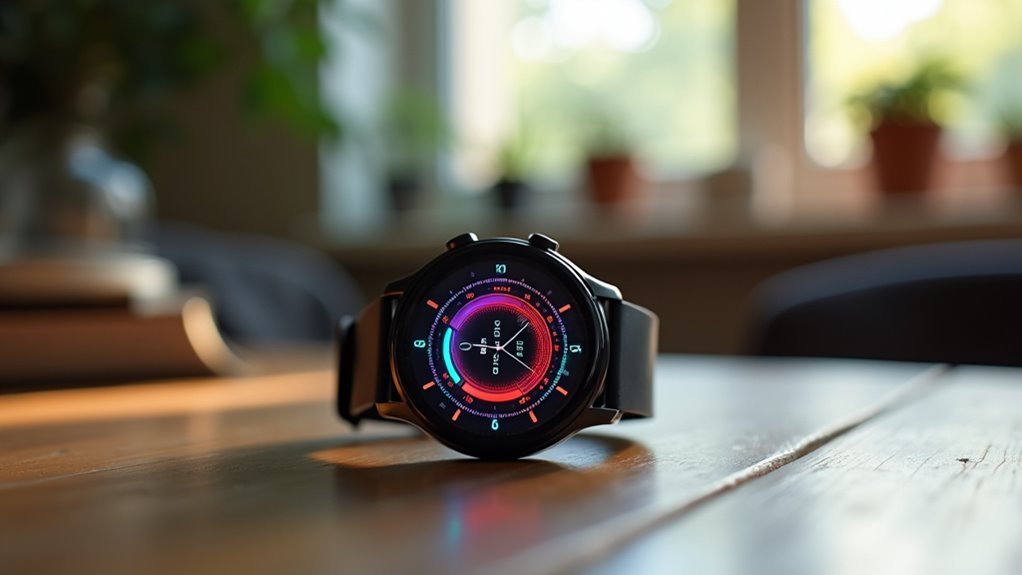
When you glance at your smartwatch’s recovery score, you’re seeing the result of a sophisticated composite health scoring system that aggregates multiple biometric signals into a single, digestible number.
These systems rely on core scientific principles that demand dimensional homogeneity—meaning all included metrics should relate to the same underlying health concept. The construction process requires strict adherence to measurement theory, ensuring that score changes reflect real, clinically significant health changes.
Most wearables use opportunity scoring with equal weights, though weighted approaches allow differential importance for specific indicators.
However, transparency in aggregation methods remains problematic—only 25% of publications provide clear rationales.
While composite scores increase statistical power and simplify complex data interpretation, they risk misleading you if the underlying measurement theory isn’t robust. Effective composite scores must ensure that changes are interpretable and that all items move in the same directional valence to maintain clarity.
Heart Rate Variability as a Recovery Foundation
Behind every recovery score lies a fundamental metric that’s revolutionizing how athletes and fitness enthusiasts monitor their bodies: heart rate variability. HRV measures the tiny variations between consecutive heartbeats, reflecting your autonomic nervous system’s balance. When you’re well-recovered, your parasympathetic system dominates, creating higher variability. Stress and poor recovery trigger sympathetic dominance, reducing HRV.
| HRV Status | Nervous System | Recovery Indication |
|---|---|---|
| High HRV | Parasympathetic dominant | Well-recovered, ready to train |
| Normal HRV | Balanced systems | Moderate recovery status |
| Low HRV | Sympathetic dominant | Poor recovery, consider rest |
Your smartwatch analyzes these patterns using metrics like RMSSD, establishing personal baselines to determine whether you should push hard or prioritize recovery today. Modern devices can now capture reliable HRV data in ultra-short durations of just one minute, making daily monitoring practical without lengthy measurement sessions.
Sleep Quality Integration in Recovery Algorithms
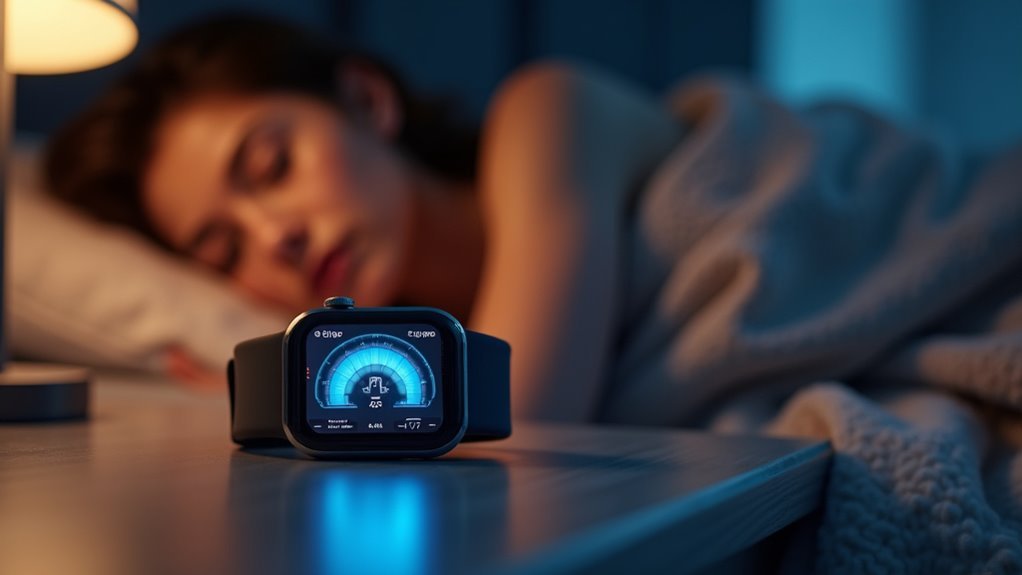
While HRV provides the physiological foundation for recovery tracking, your smartwatch doesn’t stop there—it weaves sleep data into sophisticated algorithms that paint a complete picture of your body’s restoration status.
Your device captures multiple sleep metrics: duration, stages (light, deep, REM), efficiency, and consistency patterns. These feed into proprietary algorithms that weigh sleep quality alongside multi-sensor data from heart rate, movement, and skin temperature.
When you experience sleep disruptions—frequent awakenings or low efficiency—your recovery score drops accordingly.
Machine learning algorithms now better distinguish between restless and restorative sleep phases, improving accuracy. However, inter-device variability and algorithm differences can affect reliability.
Your sleep timing consistency enhances circadian rhythm optimization, directly boosting recovery metrics through validated physiological associations. Advanced systems also track rollover frequency as an indicator of sleep disturbance, analyzing excessive movement patterns that correlate with poor recovery scores.
Multi-Parameter Data Fusion Techniques
Beyond sleep integration, your smartwatch employs sophisticated multi-parameter data fusion techniques that combine disparate sensor streams into unified recovery insights.
Your device uses Kalman filters for real-time state estimation, processing heart rate variability, accelerometer data, and skin temperature simultaneously. Bayesian networks enhance reliability by calculating probabilistic relationships between different physiological markers, while machine learning models adapt to your unique baseline patterns.
The fusion process addresses critical data quality challenges, including varying sampling rates between sensors and noise reduction across multiple input streams. This approach enables remote monitoring capabilities that allow healthcare professionals to track patient rehabilitation progress effectively from a distance.
Multi-input CNN architectures capture latent features from your time-series data, reconstructing missing information when sensors temporarily fail. Your smartwatch’s distributed sensing approach continuously calibrates sensors to maintain consistency, ensuring that recovery scores reflect accurate biomedical inference rather than isolated sensor readings.
Machine Learning Models for Personalized Recovery Insights
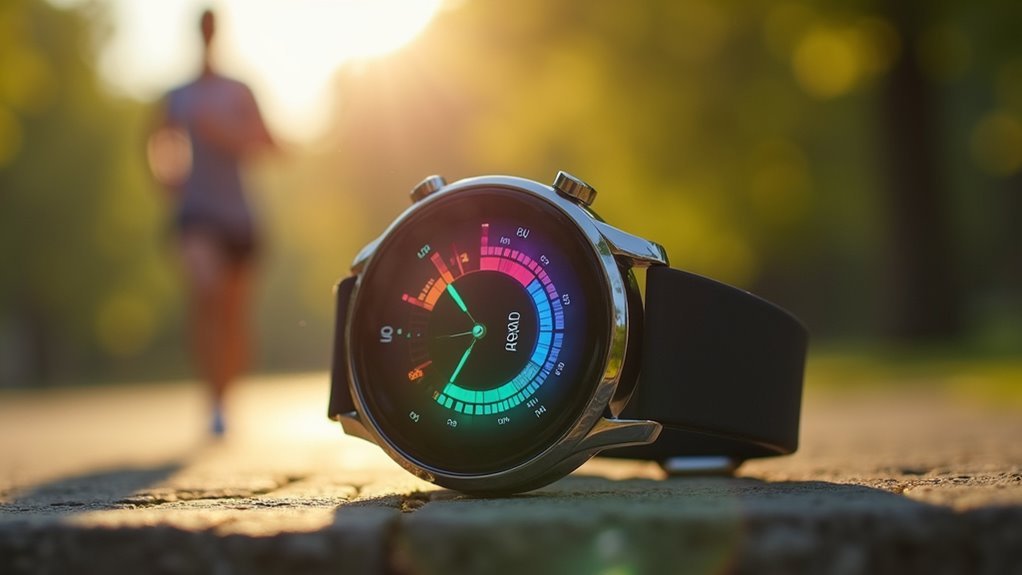
Your smartwatch’s recovery scoring relies on machine learning models that learn your unique physiological patterns and adapt to your individual baseline over time.
These systems extract statistical features from your heart rate variability, blood pressure, and stress indices, then apply sophisticated algorithms to predict your recovery state. The models incorporate your demographic data and behavioral metrics to create personalized insights that reflect your specific recovery profile.
Advanced algorithms analyze your physiological data to generate personalized recovery predictions tailored to your unique baseline patterns.
Recovery algorithms also analyze your respiration rate patterns during sleep and rest periods to provide additional physiological context for more accurate scoring.
- Supervised Learning Algorithms – Random forests, support vector machines, and neural networks process multi-modal sensor data to classify your recovery states with high accuracy.
- Transfer Learning Adaptation – Pre-trained models fine-tune using your personal data, minimizing training requirements while maximizing individual accuracy through continuous updates.
- Temporal Pattern Recognition – LSTM networks analyze time-dependent physiological signals to understand your recovery dynamics across different time windows.
Continuous Monitoring Vs Single Point Measurements
When you rely on single-point measurements from clinic visits, you’re missing the dynamic patterns that define your true recovery status throughout each day.
Your smartwatch captures real-time physiological data continuously, revealing fluctuations in heart rate variability, sleep quality, and stress levels that isolated snapshots can’t detect.
This constant stream of information enables sophisticated trend analysis that identifies subtle changes in your recovery patterns before they become obvious through traditional assessment methods. Unlike traditional monitoring that often misses transient episodes, continuous monitoring captures critical physiological events that occur between scheduled assessments.
Dynamic Pattern Recognition
As your smartwatch collects data throughout the day, it faces a fundamental choice between continuous monitoring and single point measurements—a decision that dramatically impacts how accurately it can recognize patterns in your recovery.
Dynamic pattern recognition transforms how your device interprets recovery data. Deep learning algorithms like DeepConvLSTM excel at detecting subtle patterns from continuous wearable data streams, while single measurements often miss critical fluctuations that indicate recovery status.
Your smartwatch’s pattern recognition capabilities depend on three key factors:
- Feature selection algorithms like ReliefF that identify the most meaningful data points from your continuous streams.
- Multi-sensor integration combining heart rate variability, accelerometer, and gyroscope data for thorough pattern analysis.
- Adaptive learning that personalizes to your unique recovery patterns over time, improving accuracy through contextual understanding.
The effectiveness of these systems relies heavily on multi-sensor fusion techniques that combine data from photoplethysmography sensors, bioimpedance sensors, and inertial measurement units to create comprehensive physiological profiles. However, the lack of standardized methodologies across manufacturers means pattern recognition accuracy varies significantly between devices.
Real-Time Data Capture
The foundation of accurate pattern recognition lies in how your smartwatch captures physiological data—whether through continuous streams or isolated snapshots. Single point measurements in clinical settings often show greater variability because your heart rate can spike from nervousness or recent activity.
Your smartwatch’s continuous monitoring captures data across different contexts and times, reducing this measurement noise.
This real-time data stream provides richer datasets for calculating heart rate variability, overnight skin temperature changes, and electrodermal activity—all critical for recovery scoring. The large volumes of time-stamped data enable your device to extract multidimensional features like average heart rate during exercise and overnight variability patterns.
Continuous monitoring also detects subtle physiological fluctuations that isolated measurements miss, helping identify early fatigue signs. The plethysmography sensors in smartwatches enable this comprehensive data collection across multiple health metrics simultaneously.
Trend Analysis Advantages
While single-point measurements capture your body’s state at one isolated moment, continuous trend analysis reveals the thorough story of your recovery patterns.
Your smartwatch builds a detailed profile by tracking multiple metrics over time, reducing the impact of anomalous readings that could mislead your recovery decisions.
This all-encompassing approach offers three key advantages:
- Early Detection: Trend analysis identifies overtraining warning signs before they become problematic, allowing you to adjust your training intensity proactively.
- Predictive Analytics: Historical patterns enable your smartwatch to forecast future recovery needs, helping you plan ideal workout schedules.
- Personalized Insights: Continuous data collection trains algorithms to understand your unique recovery dynamics, delivering tailored recommendations based on your individual physiological responses and lifestyle factors. However, research shows that current training load models may not suit all athletes, particularly ultrarunners, who require specialized recovery approaches due to their extreme endurance demands.
Cardiovascular Parameter Tracking for Recovery Assessment
When you’re recovering from surgery or managing cardiovascular health, smartwatches can track essential parameters that help assess your body’s healing progress. Your device continuously monitors heart rate, records single-lead ECGs to detect arrhythmias like atrial fibrillation, and tracks blood oxygen levels 24/7.
Through photoplethysmography (PPG) technology, it measures heart rate variability with moderate accuracy, providing insights into your autonomic nervous system recovery. This real-time data helps clinicians identify complications early and adjust treatment strategies accordingly.
You’ll benefit from enhanced postoperative care through integrated telemonitoring platforms that offer prompt arrhythmia detection with up to 98% sensitivity. Your smartwatch data supports risk stratification and enables personalized lifestyle modifications, though performance may vary during certain conditions like sleep. Advanced devices can detect multiple arrhythmias including bradycardia and tachycardia in as little as 30 seconds, making them valuable tools for immediate assessment during recovery periods.
Activity Level Integration in Recovery Calculations
Your smartwatch doesn’t just count steps—it analyzes how your daily movement patterns correlate with your body’s recovery state.
The device tracks your training load by measuring workout intensity and duration, then detects how these factors impact your recovery scores over time. These calculations rely on consistent use to establish your personal baseline, as the initial recovery score may show as 100% for the first 7-10 days.
Through multi-modal activity assessment, it combines step data with various exercise types to create a thorough picture of how your activity levels influence your readiness for the next day’s challenges.
Step Count Recovery Correlation
As your smartwatch tracks each step throughout the day, it’s simultaneously gathering essential data that forms the foundation of your recovery calculations.
Studies show that devices like Fitbit and Amulet demonstrate high correlation with criterion measures in lab settings, though they may slightly underestimate your actual steps. This step count data greatly improves the subjective estimation accuracy of your daily activity, which directly aids in recovery assessments.
Your smartwatch integrates step counting with other critical metrics to create thorough recovery scores:
- Heart rate variability correlation – Step count data validates cardiovascular recovery patterns
- Sleep quality integration – Daily activity levels influence sleep-based recovery calculations
- Personalized baseline establishment – Long-term step patterns create individualized recovery thresholds
This integration allows your device to account for activity level variations, providing more accurate and personalized recovery assessments. Research indicates that individuals who tend to suppress bodily sensations may benefit most from smartwatch feedback to improve their activity awareness and recovery tracking accuracy.
Training Load Impact Detection
Beyond simple step counting, modern smartwatches analyze your training load by integrating workout intensity and duration data from the past seven days, comparing it against your previous 28-day baseline to determine how current activity levels impact your recovery needs.
Your heart rate during workouts serves as the primary indicator for calculating training load scores. The system doesn’t just track formal exercise sessions—it incorporates any logged activities with recorded training effects, including non-exercise physical activities that contribute to your daily strain.
This thorough approach prevents underestimating fatigue from lifestyle activities while providing nuanced recovery assessments tailored to your activity profile. You can filter training load by workout type for more precise impact measurements, helping detect periods of under- or overtraining before performance decline occurs. The system classifies your current training load on a scale from well below to well above normal levels, helping you understand the relative strain on your body.
Multi-Modal Activity Assessment
Modern smartwatches don’t rely on a single data stream to calculate your recovery scores—they combine multiple sensors to create a detailed picture of your daily activity patterns.
Your device continuously fuses data from accelerometers, heart rate monitors, and gyroscopes to build thorough activity profiles that capture everything from intense workouts to spontaneous movements throughout your day.
This multi-modal approach segments your day into time blocks, analyzing each period’s activity level, intensity, and duration. Your recovery score emerges from this aggregated data rather than isolated metrics.
Key components of multi-modal assessment include:
- Physiological integration – Heart rate variability and mechanical movement data combine for accuracy
- Baseline establishment – Individual norms enable personalized goal-setting and progress tracking
- Real-time processing – Continuous monitoring eliminates self-reporting biases and memory gaps
The system operates through temporally-dense data collection at frequent intervals, ensuring comprehensive behavior tracking without relying on manual user input that can introduce accuracy issues.
Real-Time Feedback Mechanisms and User Engagement
How effectively can a smartwatch guide your recovery decisions when it’s constantly monitoring your body’s physiological state?
Real-time feedback transforms raw physiological data into actionable insights you can use immediately. When your HRV drops or stress levels spike, your smartwatch alerts you to take recovery actions like adjusting hydration or extending rest periods.
Your smartwatch transforms complex body signals into simple actions: low HRV means more rest, high stress triggers hydration adjustments.
This immediacy creates powerful behavior reinforcement loops. You’ll see instant validation when recovery scores improve after following recommendations, accelerating your understanding of how different activities impact your body.
Visual metrics like daily recovery scores and heart rate recovery during workouts keep you consistently engaged with tracking. However, subjective well-being often provides more reliable insights into your recovery status than these objective measurements alone.
Gamification elements and progress notifications sustain long-term adherence, empowering you to modify lifestyle habits dynamically based on your body’s real-time recovery status.
Clinical Validation of Smartwatch Recovery Metrics
When you’re evaluating whether your smartwatch recovery scores actually mean something clinically useful, you need to see how they stack up against established medical benchmarks and proven measurement techniques.
Gold standard comparisons involve testing your device’s metrics against laboratory-grade equipment and validated clinical assessments that doctors already trust.
Algorithm validation studies then examine whether the mathematical formulas your smartwatch uses to calculate recovery scores can reliably predict actual physiological recovery states across diverse populations and conditions. These studies must include sample sizes larger than 50 participants to avoid the fair or poor bias ratings that affected nearly 90% of wearable device validation research.
Gold Standard Comparisons
Although smartwatch manufacturers market their recovery scores as scientifically validated, the clinical evidence supporting these metrics remains surprisingly limited and inconsistent.
You’ll find that most validation studies rely on retrospective data analysis rather than prospective clinical trials, which doesn’t capture real-time recovery dynamics effectively.
When comparing smartwatch metrics to established clinical standards, researchers face significant challenges:
- Data precision issues affect reliability, with device accuracy varying substantially between manufacturers.
- Limited thorough studies exist to validate recovery metrics against proven clinical outcomes.
- User compliance variability undermines data quality, as consistent device usage remains essential for accurate measurements.
You should understand that integrating smartwatch data with clinical outcomes requires careful consideration of these validation gaps, particularly when evaluating heart rate variability, sleep quality, and physical activity metrics. The natural day-to-day variability of HR and HRV measures creates additional complexity, as baseline fluctuations between 3-13% can significantly impact recovery score interpretations.
Algorithm Validation Studies
While manufacturers tout sophisticated proprietary algorithms, you’ll discover that rigorous validation studies reveal a complex picture of smartwatch recovery metric performance. Researchers typically employ randomized controlled trials comparing devices with and without recovery features across diverse populations.
You’ll find study durations ranging from days to months, depending on specific metrics being evaluated. The results show acceptable accuracy for basic metrics like heart rate and two-stage sleep tracking, but four-stage sleep and heart rate variability demonstrate significant variability.
You’ll encounter substantial device-to-device differences and technical issues affecting data reliability. Missing data rates span 3-51%, while adherence varies from 49-100%.
Small sample sizes and limited demographic diversity further complicate validation efforts, highlighting the need for standardized reporting metrics and ongoing research. Leading validation studies demonstrate 90% correlation between consumer smartwatch heart rate measurements and clinical-grade reference equipment during various exercise conditions.
Remote Monitoring Applications in Healthcare Settings
As smartwatches become increasingly sophisticated, healthcare providers are discovering their transformative potential for continuous patient monitoring beyond traditional clinical settings.
You’re witnessing a fundamental shift where real-time essential signs like heart rate, ECG, and oxygen saturation can be tracked continuously, enabling earlier hospital discharges while maintaining thorough surveillance.
This technology transforms your healthcare experience by automatically transmitting data to electronic health records, eliminating manual collection tasks and reducing human error. Smartwatches also provide medical alerts with fall detection capabilities that are particularly crucial for elderly users, given that one-third of individuals over 65 experience falls annually.
Remote monitoring applications offer three key advantages:
- Early Detection Systems – You’ll receive proactive interventions as continuous data streams identify clinical deterioration before symptoms worsen.
- Enhanced Patient Engagement – You gain real-time access to health metrics, fostering better self-management and treatment adherence.
- Cost Reduction – You’ll experience fewer in-person visits and emergency situations through preventive monitoring.
Algorithm Accuracy Limitations and Calibration Challenges
Remote monitoring’s promise hinges on the accuracy of underlying algorithms, yet smartwatch recovery scores face significant measurement limitations that can compromise clinical decisions. You’re dealing with heart rate algorithms that struggle with non-increasing rates during activity, reducing recovery accuracy by up to 27% in calorie estimates alone.
| Metric | Primary Limitation |
|---|---|
| Heart Rate | Non-increasing rates during activity |
| Sleep Tracking | Motion artifacts and skin tone variability |
| Blood Pressure | Systematic calibration bias |
| Calorie Burn | 27% margin of error |
Your device’s calibration creates anchoring effects, causing proportional bias in measurements. When algorithms combine multiple biometric signals, each carrying inherent errors, they compound overall uncertainty. Most validation occurs under controlled conditions with manual adjustments, not reflecting your real-world usage patterns. The photoplethysmography technology used in heart rate monitoring can produce variable accuracy depending on individual physiological differences and environmental conditions.
Future Developments in Recovery Score Technology
Despite current algorithm limitations, emerging technologies promise to revolutionize how your smartwatch calculates and interprets recovery scores.
AI integration will transform raw biometric data into personalized health insights, eliminating guesswork about your recovery status. Advanced sensors will track previously unmeasurable physiological signals with unprecedented accuracy. These systems will provide actionable advice based on pattern recognition in your biometric data, helping you understand not just what your numbers mean but what steps to take for optimal recovery.
Advanced AI will eliminate recovery guesswork by transforming raw biometric data into precise, personalized health insights through unprecedented sensor accuracy.
Future smartwatches will offer extensive health monitoring through:
- Enhanced multi-sensor arrays – Combining heart rate variability, blood oxygen saturation, skin temperature, and body composition analysis for holistic recovery assessment
- AI-powered personalized coaching – Real-time health alerts and customized recovery recommendations based on your unique physiological patterns
- Seamless ecosystem integration – Cross-platform compatibility with health apps, cloud storage, and other wearables for complete health profiles
These developments will enable early disease detection and proactive health management through continuous monitoring.
Frequently Asked Questions
How Much Does a Smartwatch With Recovery Scoring Typically Cost?
You’ll typically spend $200-$450 for a smartwatch with recovery scoring. COROS and Fitbit models cost $200-$300, while Garmin Forerunner 265 and Apple Watch start around $400-$450. WHOOP requires $18 monthly subscriptions.
Which Smartwatch Brands Offer the Most Accurate Recovery Scores?
You’ll find WHOOP delivers the most accurate recovery scores with 99% HRV consistency. Oura Ring provides optimistic HRV readings, while Garmin and Fitbit offer reliable, thorough recovery tracking that’s suitable for fitness monitoring.
How Long Does the Battery Last With Continuous Recovery Monitoring Enabled?
You’ll get 14-15 days of battery life with continuous recovery monitoring on devices like Amazfit Balance and COROS PACE 3, though GPS usage considerably reduces this to under 40 hours.
Can Recovery Scores Help Prevent Injuries During Intense Training Periods?
You can use recovery scores to identify high fatigue periods and adjust your training intensity accordingly. They’ll help you recognize when you’re at higher injury risk due to inadequate recovery during intense training.
Do Recovery Scores Work Differently for Older Adults Versus Younger Users?
Recovery scores work differently for you depending on your age because algorithms aren’t calibrated for age-specific physiological changes. If you’re older, you’ll likely see less accurate readings due to altered baselines.
In Summary
You’ll find that smartwatch recovery scores work best when you understand their limitations alongside their strengths. While they’re excellent for tracking trends and providing personalized insights through machine learning, you shouldn’t rely on them as medical-grade diagnostics. As algorithms improve and clinical validation expands, you’ll see more accurate recovery assessments. Remember, they’re powerful tools for optimizing your health when you interpret the data thoughtfully.

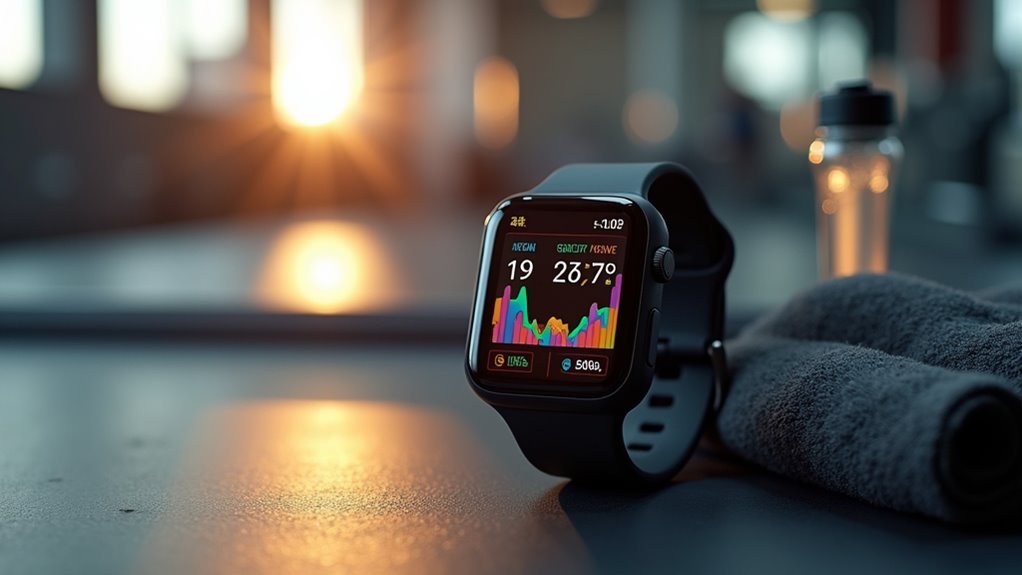
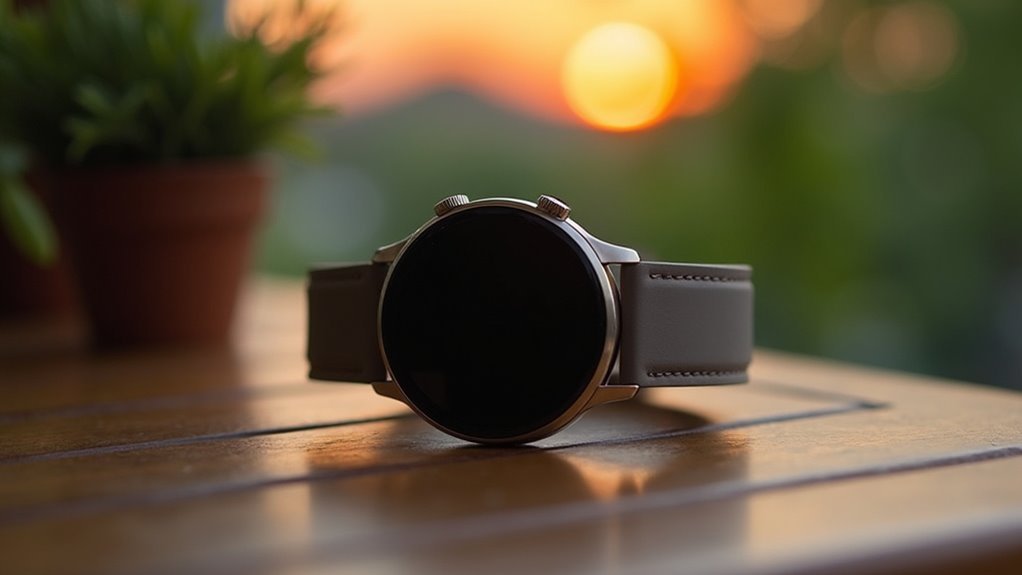
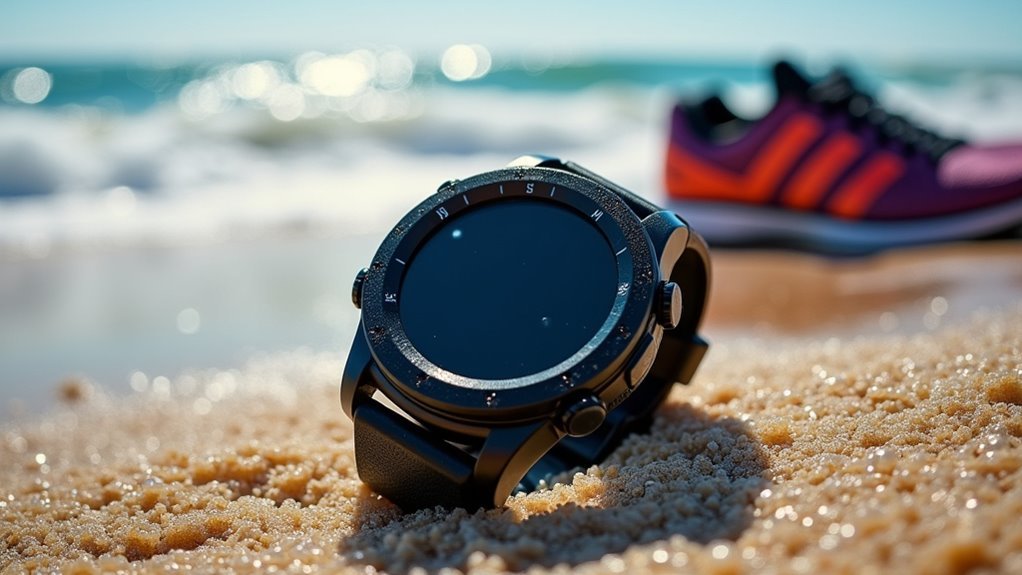
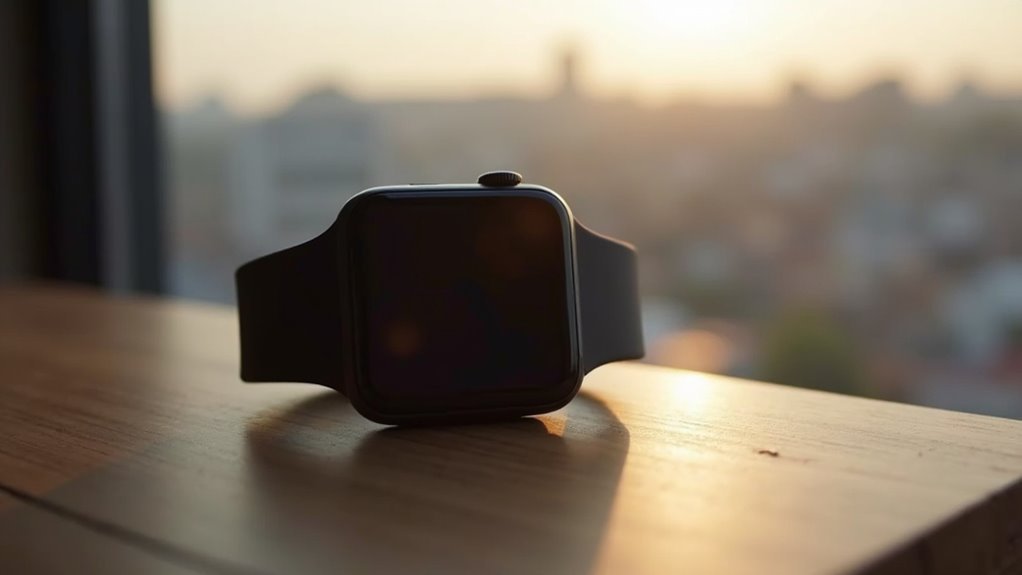
Leave a Reply